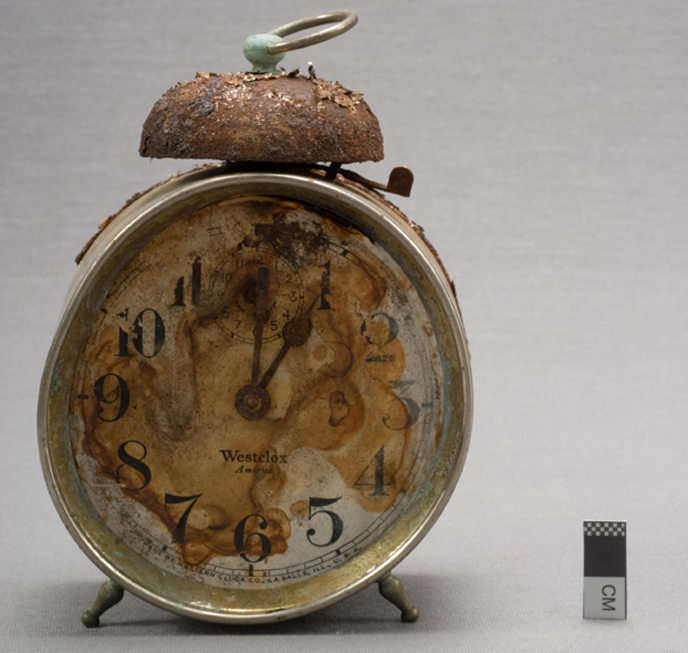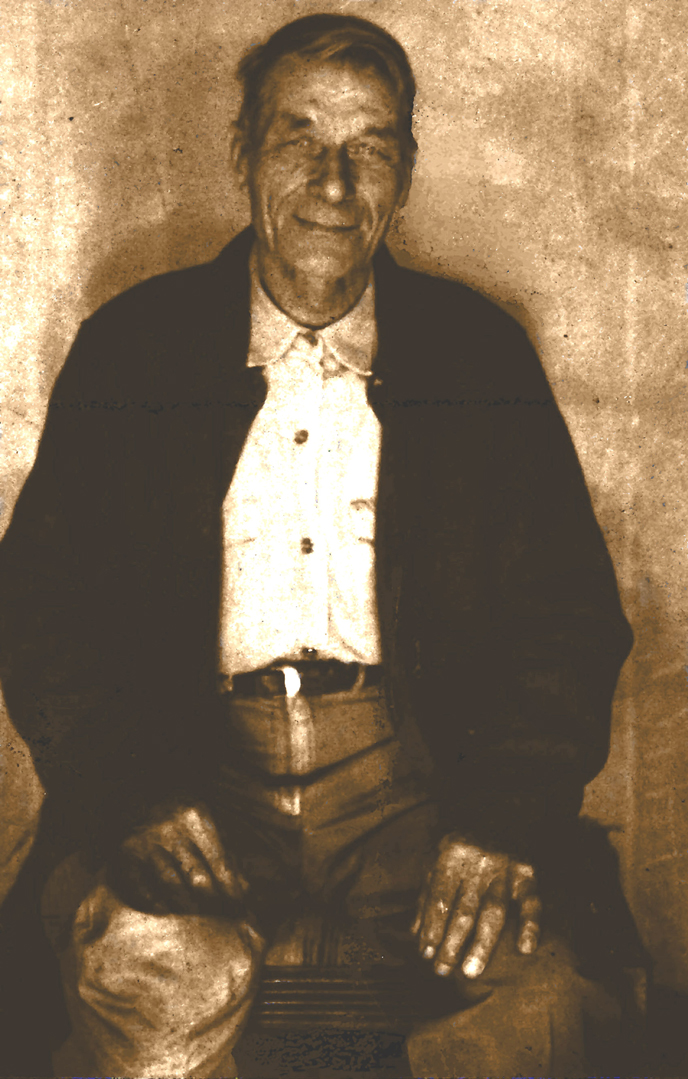
NPS Photo
The alarm clock in the photo above is a Westclox “‘America’ Style 2” alarm clock, and it was manufactured between 1927 and 1929 in LaSalle, IL. It’s not in the best of shape—why is this rusty clock important to Katmai? Because it belonged to Roy Fure, one of the park’s former residents. Fure and his family used this alarm clock while living at his cabin in the Bay of Islands. It is also listed on the National Register of Historic Places.

Fure’s Cabin is a beautiful, hand-hewed, one room cabin, situated on a narrow isthmus between Naknek Lake and Lake Grosvenor. It is a public use cabin for paddlers, hikers and backcountry travelers. (NPS Photo)
Fure was a trapper and cannery worker who was born in Lithuania in 1885. He immigrated, arriving in Sandpoint, Alaska on August 30, 1912 from Vladivostok, Siberia. He was in the Naknek region by 1914. In 1919, while working for the Alaska Packers Association in Ugashik, he met and married Anna Johnson, who was from the Bethel area. They had three sons and a daughter; only one son and one daughter survived childhood. In 1926, Roy and Anna built and moved into the cabin at Bay of Islands. In 1929, Anna passed away, and Roy married Fanny Olson from Naknek. They had a daughter as well. Fanny and Roy were divorced around 1937.
In 1931, when President Hoover extended the boundaries of Katmai National Monument, Fure’s Bay of Islands Cabin lay within the new boundaries. In 1938, government officials discovered Fure’s alien status, and in 1940, when the NPS began to actively encourage the prohibition of trapping within the Monument, Fure was arrested for violation of the game laws. As a result of these two events, Fure constructed a new cabin on American Creek outside the Monument boundaries, but continued to use the Bay of Islands Cabin until his death in 1962.
There are over 500 objects from Roy Fure’s Bay of Islands Cabin in the museum collection at Katmai—the largest historic collection the park has. Included are the standard artifacts of early Euro-Americans in the Bristol Bay region---metal traps, Prince Albert cans, glass bottles, and metal stove parts. However, Fure had lots of unusual items that must have been quite luxurious for the time: electric lights with switches, kerosene cookstoves, battery powered flashlights, a sewing machine, a lathe, a compressor, and this alarm clock. Electricity was created by a windmill, very rare during the time period in this part of the world.
Alaska’s early trappers blended the practices, communities, and cultures of Natives, Europeans, and Americans—Roy Fure was no exception. He trapped or fished as the season dictated, and lead a relatively simple subsistence lifestyle. He built a beautiful eastern European-style cabin—when one log builder saw Fure’s American Creek cabin he declaired: “Dick Proenneke’s cabin in Lake Clark National Park and Preserve draws hundreds of visitors each year, but his craftsmanship does not measure up to the skills of Roy Fure.” His creativity and ingenuity enabled him to succeed in the Alaska bush and his adaptation of technological advances provided comfort and small luxuries in an often harsh environment.
While Fure most likely used this alarm clock to tell time---of course one question we could ask, tongue in cheek: What did he need alarm clock to get up for?

Roy Fure (NPS Photo)
